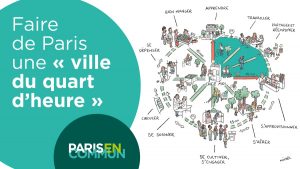“Creating pedestrian-friendly utopias”
.
Walking is good for you:
A recent study published in the journal Preventive Medecine found that people who walk or cycle to work report increased concentration and less strain. Researchers from the University of East Anglia who studied 18,000 British workers found that a commute that involves physical activity (walking to a bus included) improved measures like the “feeling worthlessness, sleepless nights and unhappiness”.
Oh, Go Take a Walk – The New York Times
.
It can also be a pleasure, for visitors to a place but also to those who live in a place:
Futures Forum: Oh, go take a walk… in Sidmouth
.
For both tourist and resident, one can be a “flâneur” – which allows for a bit of poetic licence:
The classic 19th-century Parisian walker was called a “flâneur,” and to be a flâneur “is to be in a floating state, where you are spiritually at least two feet off the ground, where you are able to observe, but don’t feel compelled to connect.” Walking is the Western form of meditation, Mr. Gopnik writes of this Parisian, contemplative style…
.
Paris is, of course, the place of the flâneur, and Paris is where walking has become a very prosaic piece of city government policy:
While the 15-minute city might seem like a utopian impossibility, many policymakers around the globe are already beginning to give their urban cores new life with better city planning, the decentralization of services and goods, and new laws that rezone streets to remove cars and make way for pedestrians and cyclists.
 One city spearheading this urban strategy is Paris under the leadership of its Mayor, Anne Hidalgo. Her goal is to encourage the development of more self-sufficient communities within each arrondissement of Paris. Dubbed the “ville de quart d’heure”, or the quarter-hour city, the goal is to transform the capital into more efficient neighborhoods to reduce pollution and create socially and economically diverse areas. At her unveiling of this plan, Hidalgo insisted that this revitalization effort would incorporate other strategies as well – including a 5,000 person unarmed police force, a massive undertaking to plant more trees, and heavy fines for uncivil behavior such as littering. More notably, she stated that she wants to continue to pedestrianize the capital by putting a bike lane in every street within the next three years- all while taking away 60,000 parking spaces for cars.
One city spearheading this urban strategy is Paris under the leadership of its Mayor, Anne Hidalgo. Her goal is to encourage the development of more self-sufficient communities within each arrondissement of Paris. Dubbed the “ville de quart d’heure”, or the quarter-hour city, the goal is to transform the capital into more efficient neighborhoods to reduce pollution and create socially and economically diverse areas. At her unveiling of this plan, Hidalgo insisted that this revitalization effort would incorporate other strategies as well – including a 5,000 person unarmed police force, a massive undertaking to plant more trees, and heavy fines for uncivil behavior such as littering. More notably, she stated that she wants to continue to pedestrianize the capital by putting a bike lane in every street within the next three years- all while taking away 60,000 parking spaces for cars.
Creating a Pedestrian-Friendly Utopia Through the Design of 15-Minute Cities | ArchDaily
.
That’s very unpoetic perhaps, but the idea of the 15-minute neighbourhood is gaining ground:
15-minute neighbourhoods for Sidmouth – Vision Group for Sidmouth
.
Ultimately, what attracts people to come to a place, either to visit or to live, is a ‘sense of place’:
Futures Forum: Place-making and getting a sense of place
.
And Sidmouth has a real sense of place – which we really need to be valuing:
The high street and Eastern Town: a sense of place – Vision Group for Sidmouth
“The town square is more than a marketplace.” – Vision Group for Sidmouth
.